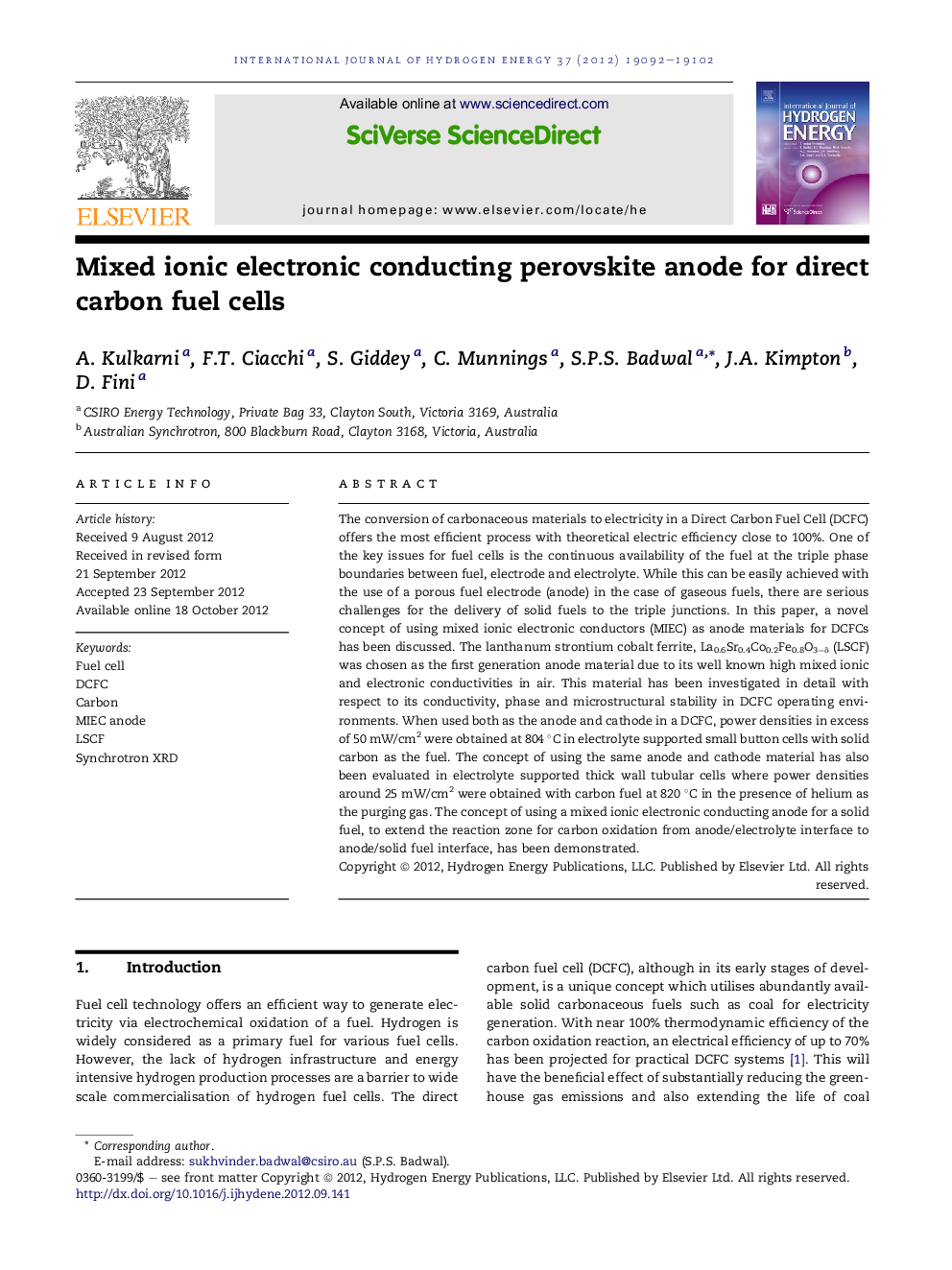| کد مقاله | کد نشریه | سال انتشار | مقاله انگلیسی | نسخه تمام متن |
|---|---|---|---|---|
| 1276117 | 1497545 | 2012 | 11 صفحه PDF | دانلود رایگان |

The conversion of carbonaceous materials to electricity in a Direct Carbon Fuel Cell (DCFC) offers the most efficient process with theoretical electric efficiency close to 100%. One of the key issues for fuel cells is the continuous availability of the fuel at the triple phase boundaries between fuel, electrode and electrolyte. While this can be easily achieved with the use of a porous fuel electrode (anode) in the case of gaseous fuels, there are serious challenges for the delivery of solid fuels to the triple junctions. In this paper, a novel concept of using mixed ionic electronic conductors (MIEC) as anode materials for DCFCs has been discussed. The lanthanum strontium cobalt ferrite, La0.6Sr0.4Co0.2Fe0.8O3−δ (LSCF) was chosen as the first generation anode material due to its well known high mixed ionic and electronic conductivities in air. This material has been investigated in detail with respect to its conductivity, phase and microstructural stability in DCFC operating environments. When used both as the anode and cathode in a DCFC, power densities in excess of 50 mW/cm2 were obtained at 804 °C in electrolyte supported small button cells with solid carbon as the fuel. The concept of using the same anode and cathode material has also been evaluated in electrolyte supported thick wall tubular cells where power densities around 25 mW/cm2 were obtained with carbon fuel at 820 °C in the presence of helium as the purging gas. The concept of using a mixed ionic electronic conducting anode for a solid fuel, to extend the reaction zone for carbon oxidation from anode/electrolyte interface to anode/solid fuel interface, has been demonstrated.
The article professes the use of mixed ionic/electronic conducting (MIEC anode to extend the reaction zone for carbon oxidation from anode/electrolyte interface to anode/solid fuel interface for continuous operation of the direct carbon fuel cell. This type of fuel cell and operation mode offer the highest efficiency for direct conversion of carbon from coal or biomass to electricity.Figure optionsDownload as PowerPoint slideHighlights
► A new concept of using mixed ionic electronic conducting (MIEC) anode in DCFC.
► MIEC extends reaction zone for solid carbon fuel to external surface of anode.
► The concept of MIEC anode demonstrated in button and tubular cells with good performance.
► Synchrotron high resolution XRD identified phases not shown by normal X-ray diffractometer.
► LSCF fully characterised for phase assemblage and electrical conductivity.
Journal: International Journal of Hydrogen Energy - Volume 37, Issue 24, December 2012, Pages 19092–19102